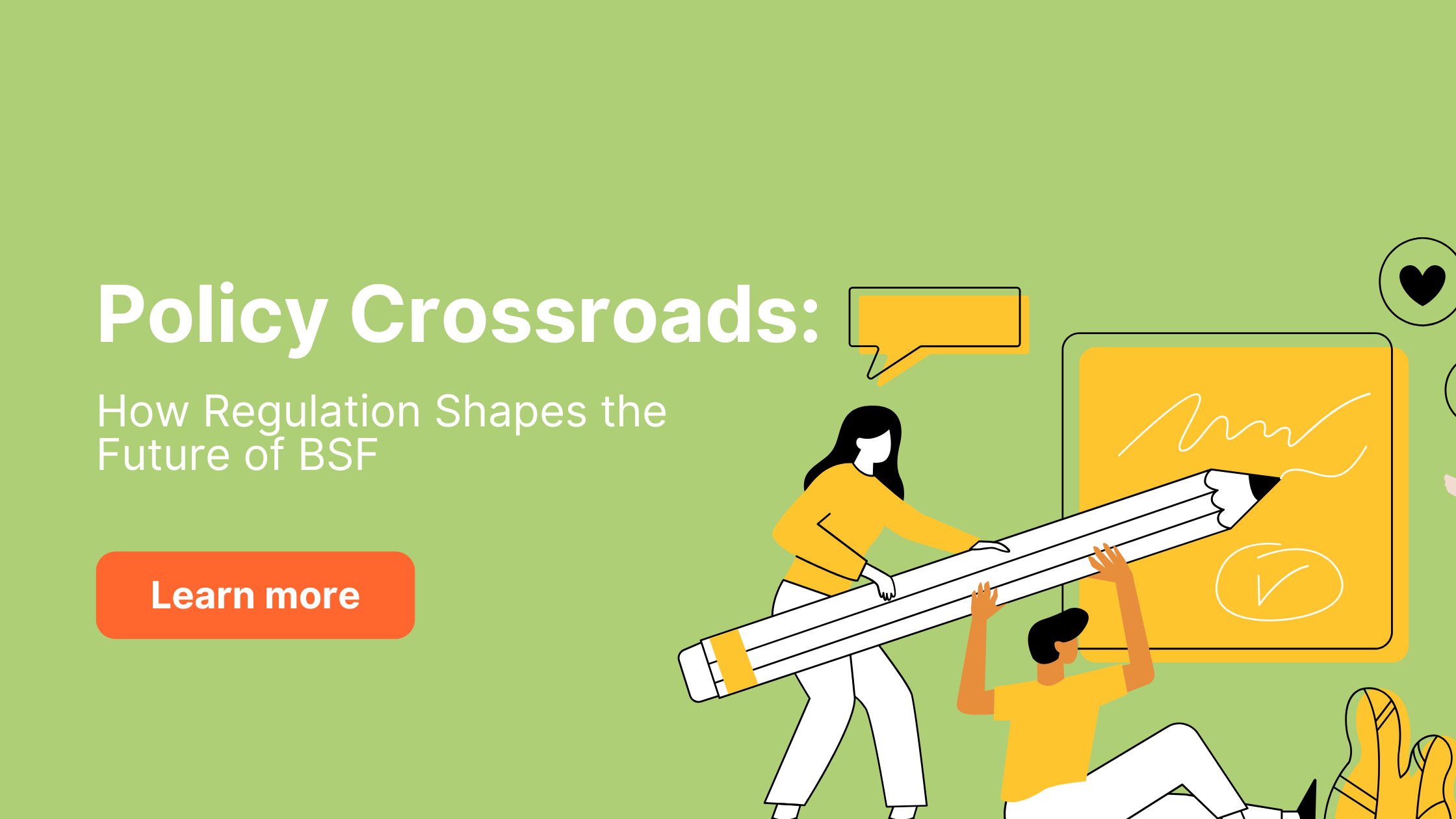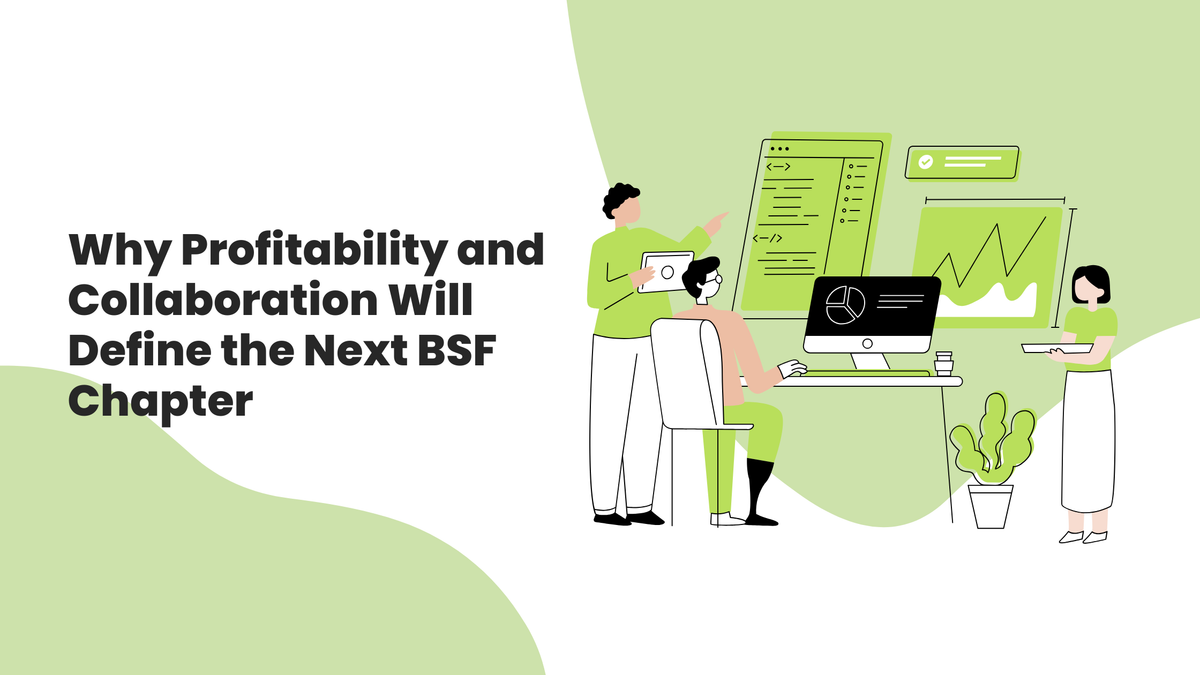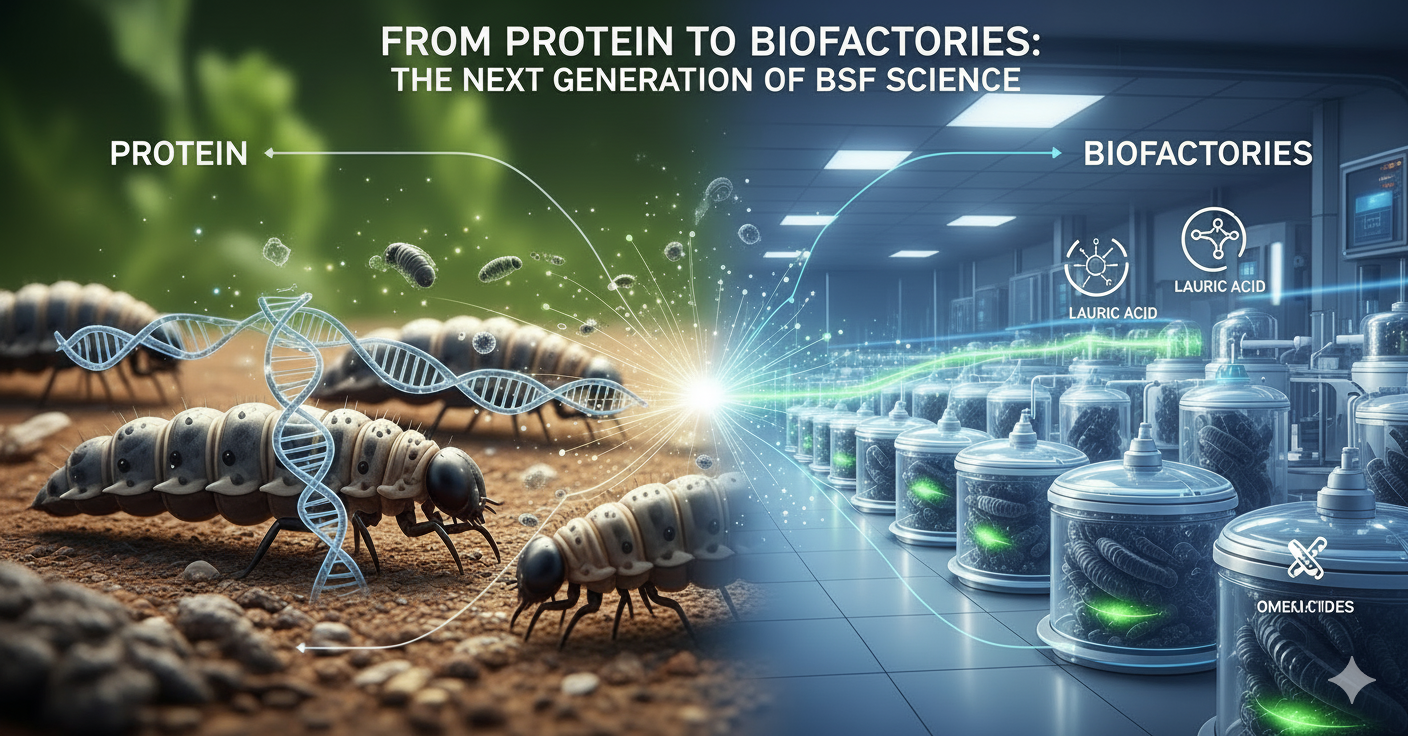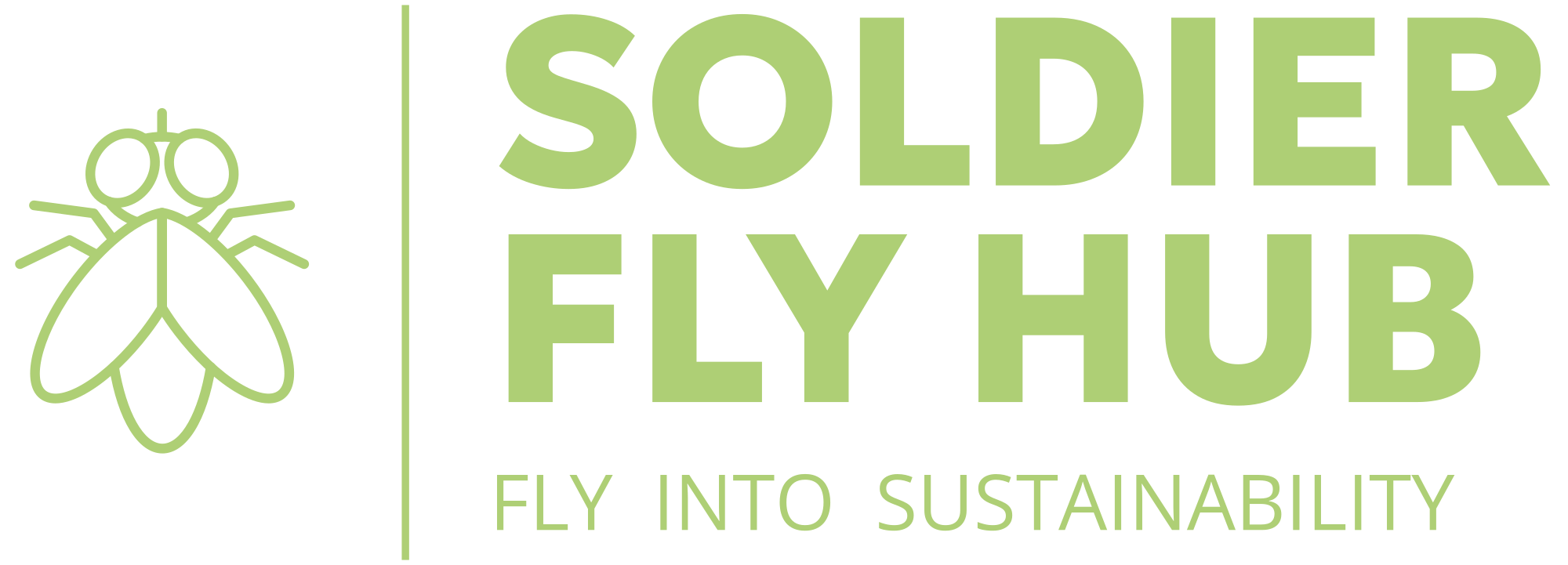Policy Crossroads: How Regulation Shapes the Future of BSF

Estimated read time: 8–9 minutes
Categories: Policy & Regulation • Markets • Operations
TL;DR (3 bullets):
- In the EU, insect processed animal proteins (PAPs) are now authorised for aquaculture, poultry, and swine — but only when insects are reared on approved substrates (no catering waste, manure, etc.). (EUR-Lex)
- In the UK, “Simpler Recycling” will make weekly household food-waste collections mandatory by 31 March 2026, expanding the feedstock pipeline — if industry can meet QA and contamination limits. (GOV.UK)
- In the US, AAFCO continues to expand definitions for BSF ingredients (larvae and oil) across pet and livestock feeds — a signal to align specs and documentation for faster customer acceptance. (AAFCO)
Why policy is (still) the biggest lever
Technology, biology, and markets matter — but rules decide which feedstocks you can touch, what claims you can make, and which customers you can sell to. For BSF operators, the next 12–24 months are about designing for compliance up front: substrates, biosecurity, traceability, and transparent QA. That’s how you unlock scale without getting caught in “black box” objections.
EU: what’s allowed — and what isn’t
Where we are now.
The EU first opened insect PAPs for aquaculture in 2017, then extended to poultry and swine in 2021 by amending the TSE feed ban. That was a watershed: same non-ruminant cross-feeding principles apply, but insects are now squarely part of non-ruminant feed protein. (EUR-Lex)
But substrates are the guardrails.
EU law is clear that insects reared for feed must be grown on eligible feed materials. Prohibited inputs include catering waste, manure, faeces, meat-and-bone meal, and certain other high-risk animal by-products. These prohibitions flow from the Animal By-Products Regulation (EC) 1069/2009, its implementing regulation 142/2011, the Feed Marketing Regulation 767/2009 (Annex III), and are reflected in the 2017 insect PAP text. (EUR-Lex)
Operator takeaway: in the EU, market access = substrate hygiene + documentation. If your pipeline includes former foodstuffs, ensure they fit Category 3 rules and are not “catering waste.” Keep animal-origin fractions traceable and compliant. (The IPIFF guides are helpful quick references.) (IPIFF)
UK: food-waste collections = more organics, more scrutiny
The UK’s Simpler Recycling policy will require local authorities to introduce weekly food-waste collections for most households by 31 March 2026. Expect more volume of source-separated organics — and a spotlight on contamination, transport, and pre-processing. (GOV.UK)
Operator takeaway: start upstream conversations now with councils and waste contractors: define acceptable contamination thresholds, pre-processing responsibilities, and transit QA. If you don’t design the interface, costs and risk will be pushed onto your gate — and margins will suffer.
US: AAFCO momentum widens customer conversations
In the US, AAFCO has been formalising BSF ingredient definitions (e.g., dried BSF larvae and BSF oil) with intended uses in swine, finfish, and pet foods, contingent on feed-grade substrates and good feeding practices. This gives nutritionists and buyers clearer language for inclusion — provided your COAs and specs are tight. (AAFCO)
Operator takeaway: align your spec sheets with the AAFCO definitions buyers recognise (moisture, crude protein, fat, ash, FFA, microbiology) and map your substrates to “feed-grade” language to speed up approvals.
Risk frameworks: what regulators look for
European risk assessments (EFSA) and regulatory reviews converge on a simple idea: risk = substrate + process + traceability. Authorities care about biological/chemical hazards, allergens, and environmental aspects — and they expect process controls and evidence rather than promises. (European Food Safety Authority)
Operator takeaway: publish your sampling SOPs, lab methods, and acceptance criteria. If you run blends, disclose batch logic and QC to lower buyers’ perceived risk.
Practical playbook: turning policy into advantage
1) Map your substrate legality (by region).
- EU: screen against 1069/2009 / 142/2011 and 767/2009 Annex III; no catering waste or manure; track Category 3 origins and paperwork. (EUR-Lex)
- UK: build Simpler Recycling partnerships; specify contamination limits and responsibilities in writing. (GOV.UK)
- US: document “feed-grade” inputs to match AAFCO definitions. (AAFCO)
2) Pre-processing where it pays.
Contamination kills margin and compliance. Put depack/size-reduce/screen steps where they reduce downstream rework and QA failures.
3) Treat QA as a sales asset.
Provide COAs with error bands, lot traceability, and on-time/in-full (OTIF) stats. Build trust before you ask for inclusion rates.
4) Engineer frass for marketability.
If local rules require pasteurisation or set contaminants thresholds, cost it in and design for moisture and handling. Make frass a product with a spec, not a residual with a problem.
5) Evidence beats slogans.
Anchor sustainability claims in transparent methods. Industrial-scale LCAs for BSF are emerging — and they highlight where process control matters most (e.g., rearing/drying energy). Use them to focus improvements and buyer conversations. (European Food Safety Authority)
Common pitfalls (and how to avoid them)
- “Waste is free.” It isn’t. Budget for contamination, hauling, and storage; model multiple haul radii.
- “We’ll qualify feedstocks later.” Don’t. Substrate legality determines market access — fix it first. (EUR-Lex)
- “QA slows us down.” Bad QA slows you down more. Publish SOPs and COAs; it shortens sales cycles.
- “Policy will change for us.” Maybe — but design for today’s rules. Engage policymakers with evidence, not expectations.
What to watch in 2025–26
- EU enforcement focus on substrate provenance and cross-feeding compliance as volumes scale. (EUR-Lex)
- UK rollout of Simpler Recycling — opportunities for organics partnerships, but contamination standards will bite. (GOV.UK)
- US ingredient definition refinements via AAFCO — use the language your buyers’ QA teams already understand. (AAFCO)
Related SoldierFlyHub content
- Resource: Life Cycle Assessment of BSF Farming (industrial scale) — summary + links.
- Resource: Insect Farm Hub — curated learning for teams.

Profitability & Collaboration — the operator playbook for the next chapter.

From Protein to Biofactories — science moves from bulk protein to functional value.
CTA
If you’re a council, waste company, feed buyer, or operator piloting new feedstock routes under these policies, let’s document it. We’ll publish short, practical case notes (substrate, pre-processing, QA, cost) to help the sector scale safely and profitably.

Also read: Community Voices from BSFCON 2025 — reflections from China, Africa, and Europe that complement this policy lens.




